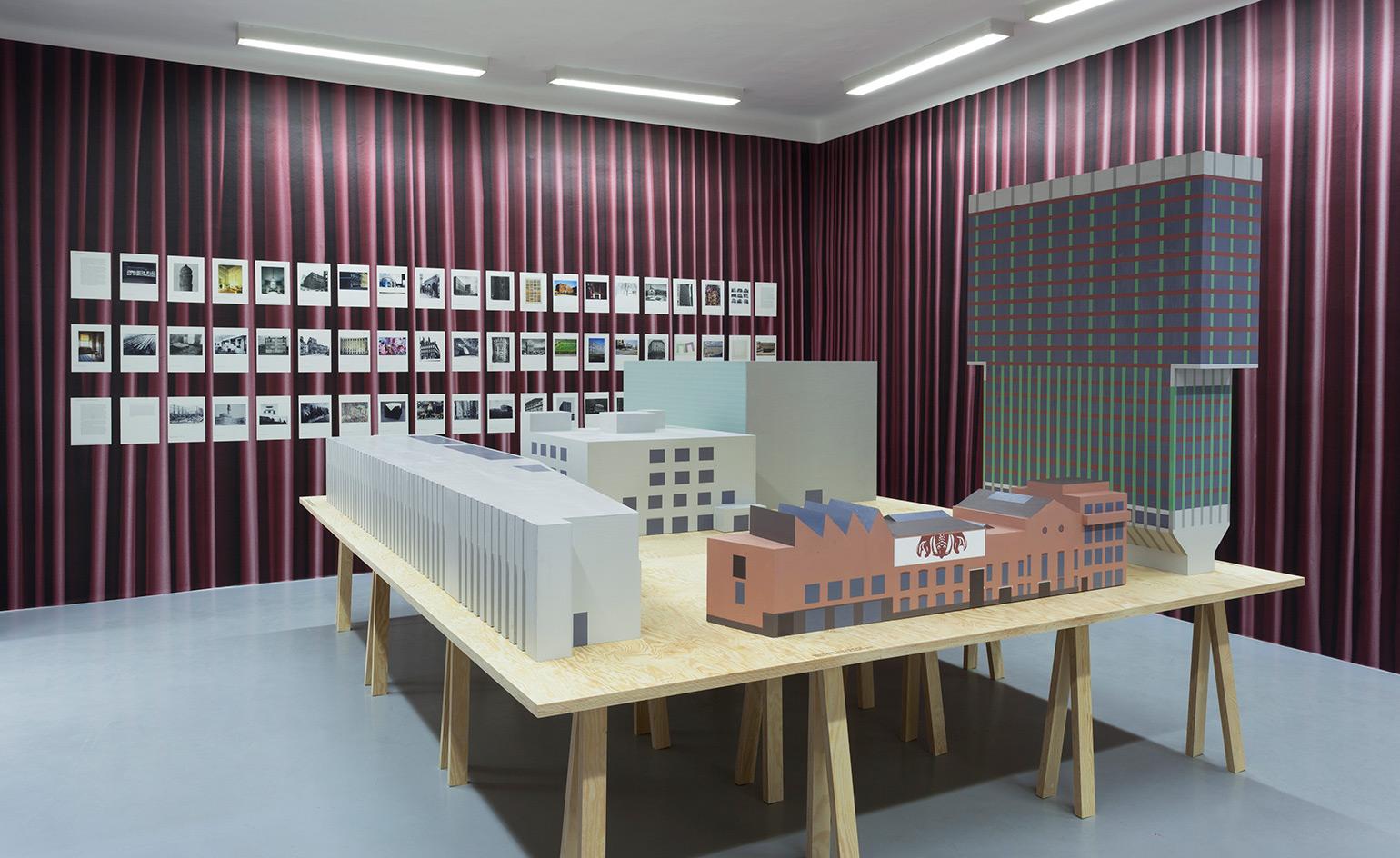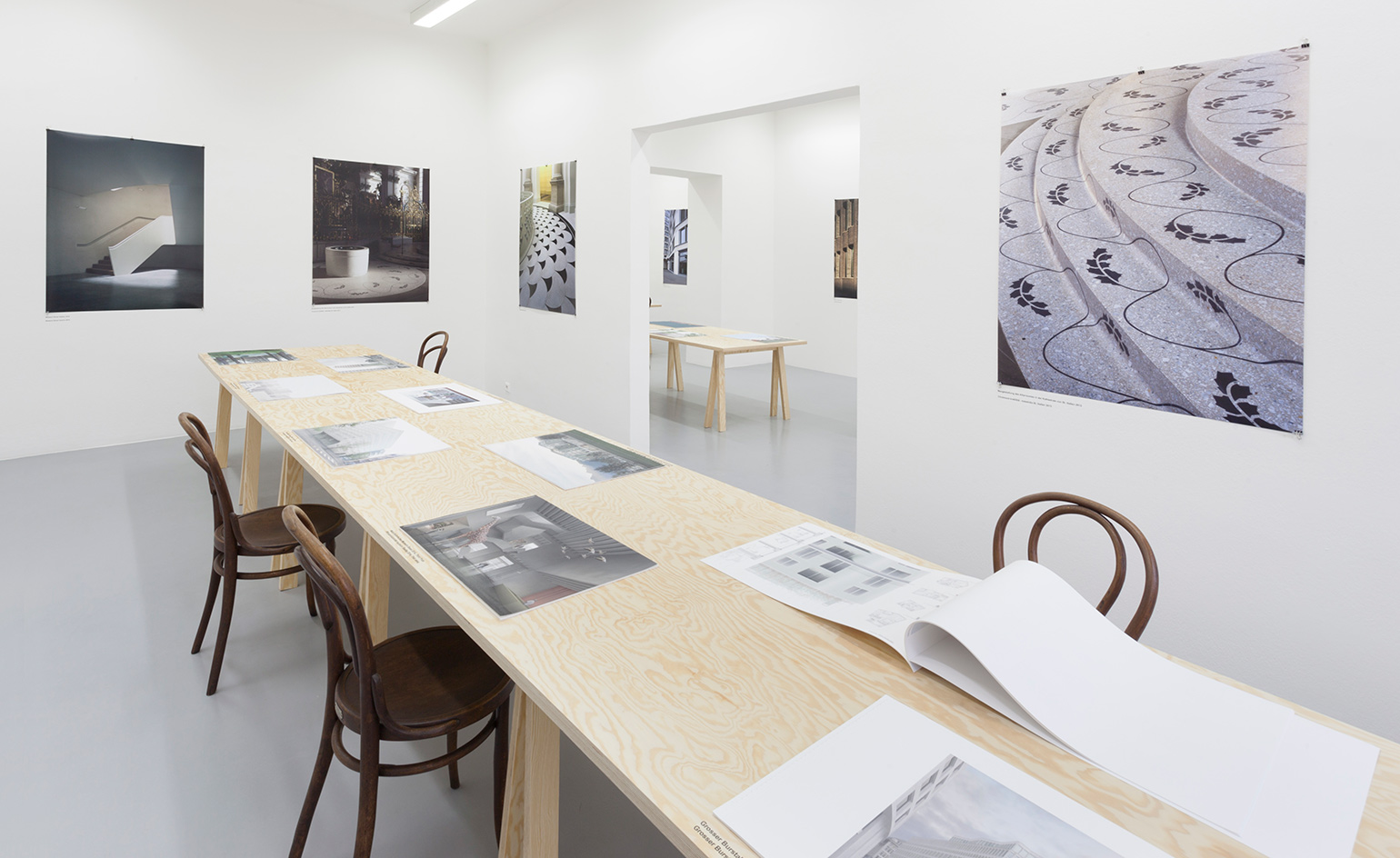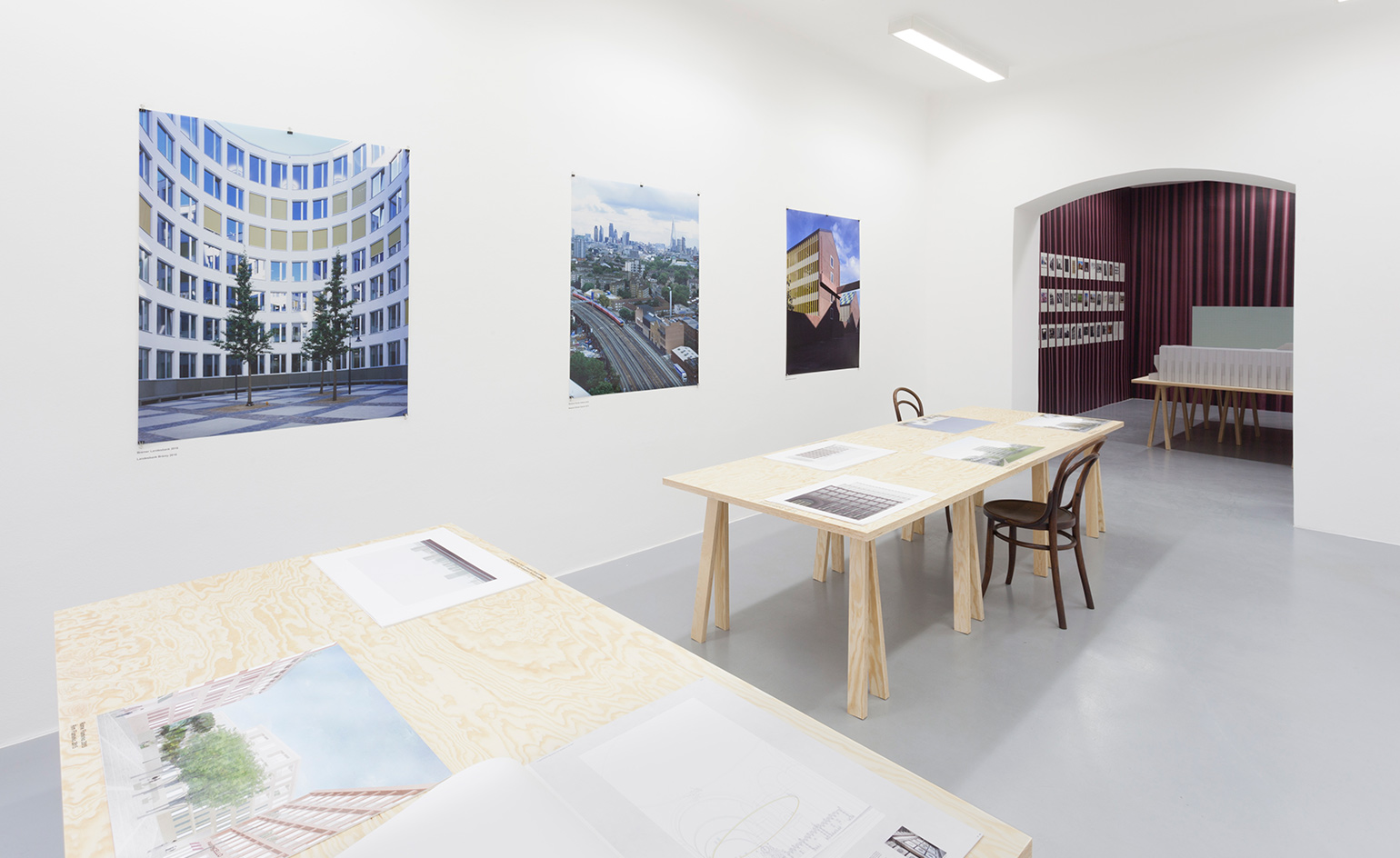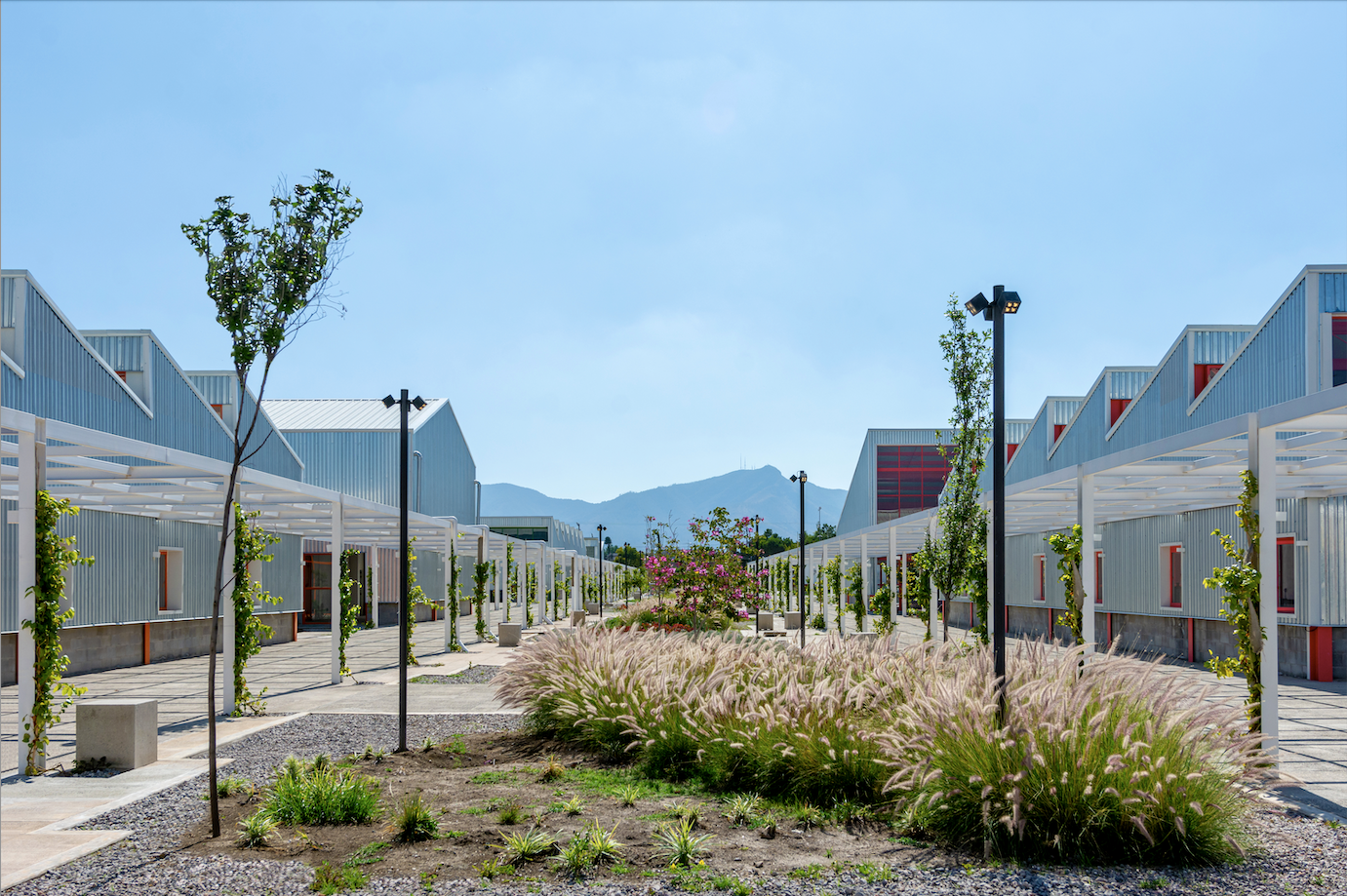The ghosts of Caruso St John: a new show examines 33 unrealised projects

Caruso St John is the subject of an exhibition at the Gallery of Contemporary Art in České Budějovice, a city in the southern Czech Republic. Models, drawings and photography from 33 competitions and six projects show the development of the architecture practice over 26 years, giving 29 unrealised concepts the chance to shine.
The firm compares its unrealised output to the designing of an imaginary city. When Adam Caruso and Peter St John first established their studio in 1990, they were entering competitions once or twice a year. Now, it’s between five and ten, sometimes more. Despite the high risk of failure due to the fiercely competitive nature of the projects and the tough panels of judges with varying interests, the practice continues to put time and money into the competition process. The art of the competition lies not just in ideas, but also in presentation, practicalities and, most importantly to the architects, clarity.

While the competition process is risky, it allowed Caruso St John to develop and demonstrate the aspirations of its practice
Examining the competition process itself, as well as the architecture, the exhibition presents books of original A2 panels and models submitted by the practice. This is where the exhibition is most illuminating, showing the development of Caruso St John through an accumulation of projects and ideas displaying the increasing attention given by the architects to history and context. Curator Michal Škoda describes their work as strong and poetic. ‘I’m fascinated by their sensitivity for place, but also for material and detail,’ he says, ‘It is important not only to build, but also to reconstruct and Caruso St John make a really great connection between the old and new.’
Award-winning projects from the practice have demonstrated this respectful approach to history. The Tate Britain renovation completed in 2014 earned them the Civic Trust Award, New London Architecture Conservation and Retrofit Award and RIBA Award, and in 2016 the practice won the RIBA Stirling Prize for Newport Street Gallery in London. Celebrating the physicality of these realised projects, large-scale photography by Hélène Binet is displayed across the exhibition, showing the buildings in full colour and high definition.

The exhibition shows the original panels from A2 books that were submitted to 33 competitions since the firm's inauguration, along with six projects that have since been realised

The first room displays five large building models – one completed building, one in development and three unsuccessful competition designs

Large colour prints of photographs by Hélène Binet show recently completed buildings in London, Zurich, St Gallen, Bremen and Lille
INFORMATION
’Caruso St John – 33 Competitions, 6 Projects’ is on view until 20 November 2016. For more information visit the Gallery of Contemporary Art / House of Art České Budějovice website
ADDRESS
House of Art
Náměstí Přemysla Otakara II. 38,
České Budějovice
TELEPHONE
Receive our daily digest of inspiration, escapism and design stories from around the world direct to your inbox.
420.386 360 539
Harriet Thorpe is a writer, journalist and editor covering architecture, design and culture, with particular interest in sustainability, 20th-century architecture and community. After studying History of Art at the School of Oriental and African Studies (SOAS) and Journalism at City University in London, she developed her interest in architecture working at Wallpaper* magazine and today contributes to Wallpaper*, The World of Interiors and Icon magazine, amongst other titles. She is author of The Sustainable City (2022, Hoxton Mini Press), a book about sustainable architecture in London, and the Modern Cambridge Map (2023, Blue Crow Media), a map of 20th-century architecture in Cambridge, the city where she grew up.
-
 Love jewellery? Now you can book a holiday to source rare gemstones
Love jewellery? Now you can book a holiday to source rare gemstonesHardy & Diamond, Gemstone Journeys debuts in Sri Lanka in April 2026, granting travellers access to the island’s artisanal gemstone mines, as well as the opportunity to source their perfect stone
-
 The rising style stars of 2026: Connor McKnight is creating a wardrobe of quiet beauty
The rising style stars of 2026: Connor McKnight is creating a wardrobe of quiet beautyAs part of the January 2026 Next Generation issue of Wallpaper*, we meet fashion’s next generation. Terming his aesthetic the ‘Black mundane’, Brooklyn-based designer Connor McKnight is elevating the everyday
-
 Mexico's Office of Urban Resilience creates projects that cities can learn from
Mexico's Office of Urban Resilience creates projects that cities can learn fromAt Office of Urban Resilience, the team believes that ‘architecture should be more than designing objects. It can be a tool for generating knowledge’
-
 Arbour House is a north London home that lies low but punches high
Arbour House is a north London home that lies low but punches highArbour House by Andrei Saltykov is a low-lying Crouch End home with a striking roof structure that sets it apart
-
 A former agricultural building is transformed into a minimal rural home by Bindloss Dawes
A former agricultural building is transformed into a minimal rural home by Bindloss DawesZero-carbon design meets adaptive re-use in the Tractor Shed, a stripped-back house in a country village by Somerset architects Bindloss Dawes
-
 RIBA House of the Year 2025 is a ‘rare mixture of sensitivity and boldness’
RIBA House of the Year 2025 is a ‘rare mixture of sensitivity and boldness’Topping the list of seven shortlisted homes, Izat Arundell’s Hebridean self-build – named Caochan na Creige – is announced as the RIBA House of the Year 2025
-
 In addition to brutalist buildings, Alison Smithson designed some of the most creative Christmas cards we've seen
In addition to brutalist buildings, Alison Smithson designed some of the most creative Christmas cards we've seenThe architect’s collection of season’s greetings is on show at the Roca London Gallery, just in time for the holidays
-
 In South Wales, a remote coastal farmhouse flaunts its modern revamp, primed for hosting
In South Wales, a remote coastal farmhouse flaunts its modern revamp, primed for hostingA farmhouse perched on the Gower Peninsula, Delfyd Farm reveals its ground-floor refresh by architecture studio Rural Office, which created a cosy home with breathtaking views
-
 A revived public space in Aberdeen is named Scotland’s building of the year
A revived public space in Aberdeen is named Scotland’s building of the yearAberdeen's Union Terrace Gardens by Stallan-Brand Architecture + Design and LDA Design wins the 2025 Andrew Doolan Best Building in Scotland Award
-
 The Architecture Edit: Wallpaper’s houses of the month
The Architecture Edit: Wallpaper’s houses of the monthFrom wineries-turned-music studios to fire-resistant holiday homes, these are the properties that have most impressed the Wallpaper* editors this month
-
 A refreshed 1950s apartment in East London allows for moments of discovery
A refreshed 1950s apartment in East London allows for moments of discoveryWith this 1950s apartment redesign, London-based architects Studio Naama wanted to create a residence which reflects the fun and individual nature of the clients